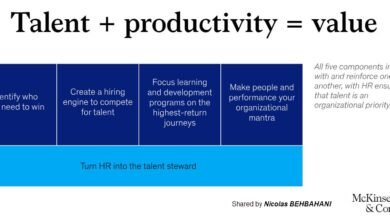Workplace Discrimination 101: 10 Kinds and What You Need to Know
HR and business leaders should treat people equally and be mindful of cultural nuances and biological differences that could lead to workplace discrimination

By | Viridiana Valdes | Marketing Specialist
The modern workplace can be a challenging environment filled with pressure and disruption—but it should never become toxic and hostile to the employee. Such toxicity happens when employers and managers treat certain classes of workers unfairly, limiting their opportunities for professional advancement and ultimately creating an unsafe environment for all.
Employment and civil rights laws in the US protect individuals against prejudice in the workplace. Title VII of the Civil Rights Act of 1964, for example, prohibits employers from discriminating against workers based on their race, color, national origin, sex, and religion. Other laws addressing disability and equal pay have since expanded workers’ protections.
Provisions in the Civil Rights Act cover the entire employee cycle, from hiring and promotion to departure/dismissal or retirement. The bottom line is that no worker should be singled out and barred from pursuing meaningful employment just because their skin color or handicap makes them different.
The US Equal Employment Opportunity Commission (EEOC) is the federal government agency that ensures candidates and employees enjoy the full protection of the law.
What is workplace discrimination?
Workplace discrimination refers to the unfair treatment of employees based on attributes that they cannot control (e.g., race, sex, genetics, or disability) or which form part of their cultural expression or identity (e.g., religion or gender) but have no impact on their job performance.
Prejudice against a particular class of employees is one of the biggest factors contributing to a hostile work environment. Discrimination can create an atmosphere where workers feel unsafe and are unable to perform their duties because they are constantly targeted or marginalized.
What’s worse, many become reluctant to speak out for fear of reprisal, especially in cases of sex discrimination, in which the victim ends up being shamed.
What are the different types of workplace discrimination?
1) Age discrimination
Seasoned employees offer their companies a wealth of experience and knowledge. However, some older workers experience age discrimination in various ways, such as when colleagues repeatedly mention or joke about their age or seniority.
At other times, a manager might limit the older worker’s scope of responsibilities and reassign tasks to a younger worker even if the more senior employee is qualified for the job.
The Age Discrimination in Employment Act (ADEA) prohibits employers from using age as a reason for edging out older workers (aged 40+) who can still keep up with the demands of their job. But while the ADEA does not cover those under 40, some state laws similarly protect young workers.
2) Disability discrimination
An employer or manager cannot limit a worker or applicant’s access to employment opportunities just because they have a record of disability or are believed to have a physical or mental condition (especially those lasting more than six months) even if they do not exhibit impairment.
The law calls for organizations to treat people with disabilities equally. Employersare required to “provide reasonable accommodation to an employee or job applicant with a disability unless doing so would cause significant difficulty or expense for the employer (undue hardship),” the EEOC says.
3) Pay discrimination
Men and women who perform “substantially equal”—though not necessarily identical—jobs must receive the same remuneration and rewards under the Equal Pay Act. The law extends beyond base pay to include benefits, bonuses, stock options, profit sharing, holiday pay, and allowances. If there is a gap, companies cannot scale back the compensation package of either sex just to equalize pay.
4) Discrimination based on genetic information
Breakthroughs in mapping the human genome provide people with insights into their genetic constitution and genealogy. Even if such information were available, the law restricts employers from requesting or requiring a person’s genetic background as part of their screening process.
5) Harassment
Harassment occurs when the aggrieved person is subjected to offensive behavior as a “condition of continued employment” and when the conduct has become so severe and rampant that it is creating a hostile and abusive work environment.
The EEOC reminds employers they are“automatically liable”ifa supervisor accused of harassment takes adverse action against a worker, as seen in cases of termination, failure to promote or hire, and loss of wages.
6) Sex discrimination/sexual harassment
This form of discrimination need not always be physical, although the vast majority of sexual harassment cases reported in the mainstream media involve “unwelcome sexual advances.” Sexual harassment can take place when an aggressor communicates/exhibits any form of severe, repeated discriminatory behavior against a worker based on sex.
For example,“It is illegal to harass a woman by making offensive comments about women in general,” the EEOC says.
7) National origin discrimination
Employers are restricted from acting less favorably toward workers and job applicants because of their country of origin, ethnicity, accent, or cultural background. Workers who are married to or associated with a person from a different country/culture may also encounter discrimination because of their ties.
8) Pregnancy discrimination
Whether a woman is having an easy pregnancy or dealing with health issues related to childbearing, they are protected against unfair treatment at work under the Pregnancy Discrimination Act.
“If a woman is temporarily unable to perform her job due to a medical condition related to pregnancy or childbirth, the employer or other covered entity must treat her in the same way it treats any other temporarily disabled employee,” the EEOC says. This may mean providing reasonable accommodation.
9) Race discrimination
Prejudice against a person based on their race or association with another of a different race or color is still rampant in the era of diversity and inclusion (D&I).
Whereas discrimination against a person’s national origin or ethnicity is a type of cultural prejudice, in contrast, discrimination against a person’s race or color targets them primarily for their biological differences and physical attributes, such as their hair texture, skin color, and facial features.
Companies should be mindful of how their workplace policies affect different groups. A policy may be illegal if it is not essential to work yet adversely affects the employment of certain classes of workers.
A simple “no-beard”office rule, the EEOC explains as an example, may apply to all workers regardless of their race or color,but it could hamper career opportunities for African-American men who typically forgo shaving because they tend to develop skin irritations from it.
10) Religious discrimination
Regardless if a worker is part of a major sect or espouses moral principles as an individual, they are free to express their religious identity at work. Employers are prohibited from segregating workers based on their practice of faith, such as the wearing of religious garb or observance of certain tenets.
There is a caveat, however.Staff members cannot be “forced to participate (or not participate) in a religious activity.”
Employers, meanwhile, cannot be forced to accommodate religious practices “if it is costly, compromises workplace safety, decreases workplace efficiency, infringes on the rights of other employees, or requires other employees to do more than their share of potentially hazardous or burdensome work,” the EEOC says.
How can employers avoid workplace discrimination cases?
1) Ask employment lawyers and other experts for help
Knowledge of employment and civil rights laws is critical to avoiding costly legal battles. HR leaders need to consult with employment lawyers, as well as management, culture, and behavior experts such as industrial/organizational psychologists, when laying down the groundwork for any new rule or reviewing existing ones.
Remember: in formulating policies, the wording could be used in court against your company. It’s essential to take time to clarify your position from the start.
2) Compile all rules (and sanctions) in your employee handbook
Once HR and legal teams have formulated workplace policies, they have to put everything in writing, from the employer’s expectations and guidelines for the worker to the disciplinary process and corresponding sanctions in cases of misconduct. HR teams need to distribute the latest copy to employees when onboarding and immediately notify all in writing when a rule is updated.
3) Train employees well
Preventing instances of discrimination at work doesn’t stop with publishing and distributing the employee handbook. Employers and HR managers must initiate training sessions on culture and behavior, particularly cultural sensitivity, diversity and inclusion, and conflict response.
Some companies hold webinars and open forums with employees, but others go the extra mile and use the latest technology—such as chatbots powered by artificial intelligence or simulations based on virtual reality—to place employees in scenarios that prompt them to make decisions in response to conflict.
Conclusion
HR and business leaders shouldn’t wait for issues to arise before they start improving their workplace culture. Discrimination occurs when those in charge overlook typical patterns of behavior, such as microaggressions, which become rampant and eventually turn the workplace hostile.
HR managers are also responsible for guiding employees throughout the reporting process if they believe they have encountered errant behavior at work and should never make the aggrieved party feel as though they would face retaliation for speaking out.
Leaders should uphold workers’ rights equally, but they should also be mindful of the nuances that race, ethnicity, sex, gender, biology, and culture bring about. At the end of the day, the conversation on D&I is all about understanding the unique experiences of employees no matter their color or creed.
Author Bio:

Experienced Marketing Specialist with a demonstrated history of working in the law practice industry. Skilled in Business Process, Negotiation, Customer Relationship Management (CRM), Management, and Business Process Outsourcing (BPO). Strong marketing professional with a Strategic Marketing focused in Marketing from Panamerican Consulting Group and Universidad Rafael Landivar






